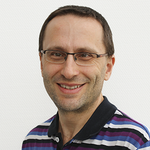Blog
The WIID celebrates 20 years with a daring new plan
After 20 years of contributions to income inequality research, the World Income Inequality Database (the WIID) is getting a new expansion that will greatly strengthen knowledge on inequalities. UNU-WIDER is now working to produce a user-friendly companion database to the classic WIID that will greatly simplify using the WIID for cross-country comparative analysis. The companion WIID will provide only the best and longest single integrated series for each country and new indicators — such as the Theil, the Atkinson, and the Palma index — alongside the income shares for the entire national distribution. It will also offer the complete estimated global income distribution for various years.
When interest in inequality began to rise among economists, it was quickly discovered that there was a problem with conducting cross-country analysis: not enough comparable, accessible data. In theory, cross-country comparisons could assess trends in inequality and begin to explain what factors contribute to falling or rising inequality. But the information needed has been widely dispersed across sources, is presented in different formats, and measures different concepts (such as income, in some cases, and consumption, in others).
To solve this problem, several attempts were made from the 1970s onwards to put together the available information in an organized way and make it accessible to all interested people. One of the most outstanding of these initiatives was carried out in 1996 by Klaus Deininger and Lyn Squire at the World Bank. After that, it was agreed that UNU-WIDER would host, update, and expand this dataset with information from all possible sources. This is how the World Income Inequality Database (WIID) was born.
The WIID - a major global public good since 2000
The WIID is one of the major public goods hosted and maintained by UNU-WIDER, enabling global research on inequality trends, as well as causes and effects of income inequality. It is freely downloadable and contains the most comprehensive set of income inequality statistics in the world, covering over 200 countries (including historical entities) with over 11,000 observations. It is updated regularly by UNU-WIDER and is a reliable source for measuring and tracking progress towards SDG10: Reduced Inequalities.
The WIID has been used, for example, by UNDP to produce the Inequality-adjusted Human Development Index (IHDI), and by UNDESA in their World Social Report. Most recently, last month, the WIID was a major source of data for a chapter on inequality in the UN Economists Network’s report for the 75th Anniversary of the United Nations on global megatrends.
The WIID collects and stores information on income inequality for almost all countries in the world over the longest possible period of time for which reliable data are available. The information reported in the WIID is collected from a variety of public sources, including international databases like PovcalNet, the Luxembourg Income Study Database (LIS), EURSOTAT, the Socio-Economic Database for Latin America and the Caribbean (SEDLAC), the OECD, UN agencies such as UNICEF, the UN Economic Commission for Latin America (ECLAC), several national statistical authorities, and many independent research studies.
The major contribution of the UNU-WIDER team that updates and maintains the WIID is to put all this fragmented information together in a systematic and organized way. By updating and maintaining the WIID, UNU-WIDER has long facilitated research on global income inequality.
What’s next for the WIID
Even though the WIID compiles up-to-date income inequality statistics, it still has major limitations for non-expert users. This is why, after 20 years of contributions to income inequality research, UNU-WIDER is again investing in a major WIID expansion that will greatly strengthen knowledge on global inequality.
Currently, users have several options to describe inequality in one particular country over a specific period, coming from different sources or reflecting different inequality concepts. For example, one can describe the recent inequality trend in Brazil using the ECLAC series for per capita income, or the SEDLAC series for either per capita income or income per equivalent adult, or even choose among the LIS series for gross or net income, per capita or per equivalent adult. Each of these series, in turn, will refer to different time intervals.
This richness of information gives advanced users the flexibility to choose the most appropriate series for their purposes, but makes using the WIID challenging because one needs a great deal of specific technical expertise and the ability to make the appropriate decisions and adjustments in order to meaningfully analyse the data.
To increase accessibility, UNU-WIDER is now working to produce a user-friendly companion database that will simplify the WIID by providing a single integrated series for each country. The WIID team plans to develop country-level series that best describe the inequality trend in each country, for the longest possible period, with the highest possible consistency. Each series will always refer to the same inequality concept and therefore be comparable to every other series and interval with the minimum necessary adjustments already having been applied. This will make inference and analysis much easier, even for non-experts.
Finally, the WIID companion will also provide new indicators — such as the Theil, the Atkinson, and the Palma index — alongside the income shares for the full distributions of each country. These data will also be aggregated to produce the entire global income distribution, where inequality is measured at the level of the entire world’s population.
This new addition to the WIID is an ambitious undertaking that will certainly contribute to a better global understanding of how to reduce global and within country income inequalities and to staying on track to SDG 10.
The views expressed in this piece are those of the author(s), and do not necessarily reflect the views of the Institute or the United Nations University, nor the programme/project donors.
 Join the network
Join the network





